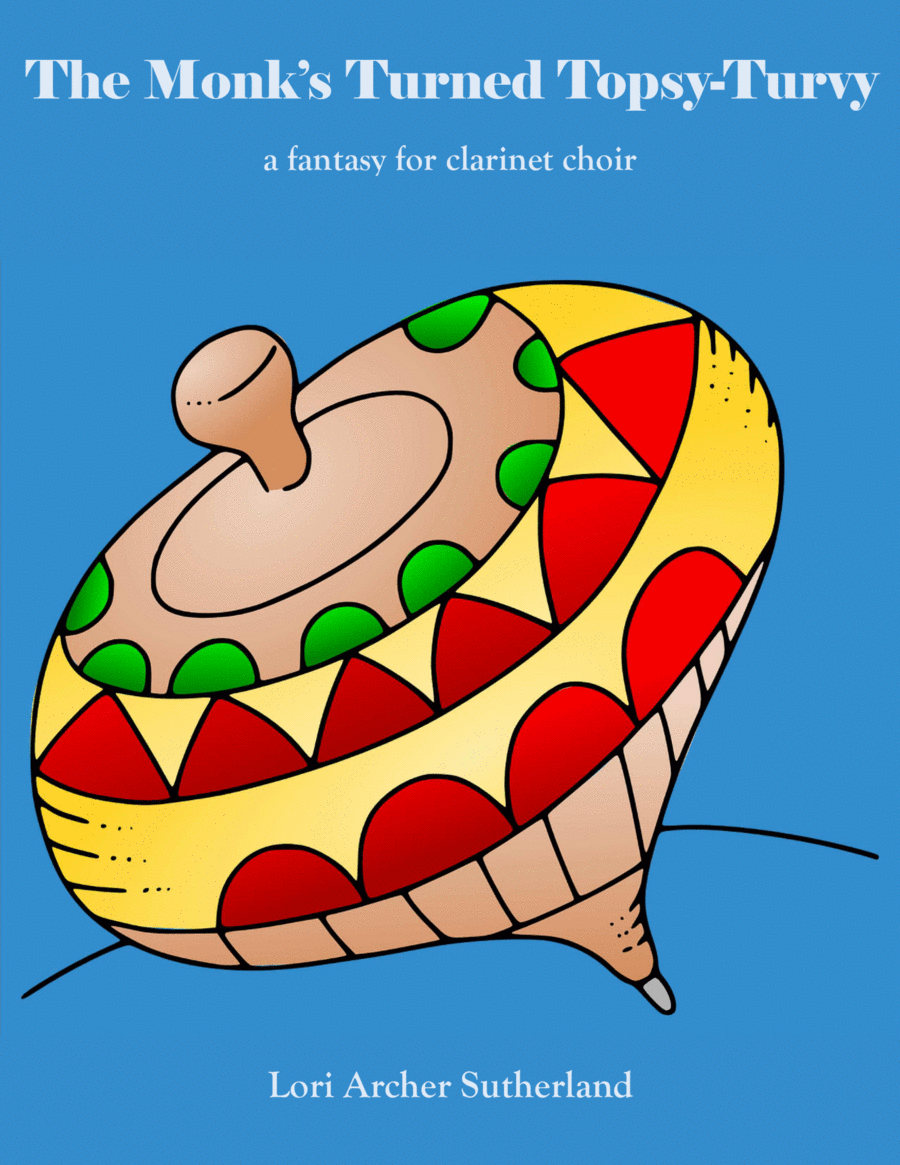Clarinet Choir,Woodwind Ensemble Bass Clarinet,Contra Alto Clarinet,E-Flat Clarinet - Level 4 - Digital Download SKU: A0.764956 Composed by Lori Archer Sutherland. Contemporary,Folk,Standards. 50 pages. Lori Archer Sutherland #4597193. Published by Lori Archer Sutherland (A0.764956). For clarinet choir (Eb, 4 Bb, Alto, Bass, Eb Contra, Bb Contra. Alternate Bb parts included for Eb and Alto. Basset horn part included (doubles Alto)).You may print multiple parts as needed for your ensemble.The Monkâs Turned Topsy-Turvy is an original fantasy for clarinet choir, based on the old French-Canadian childrenâs song, Ah! Si mon moine voulait danser! (Danse, mon moine, danse). The title is a play on words: moine means both monk and spinning top in French. The lyrics speak of persuading mon moine to dance by offering various articles of clothing, such as a hood or cap.After a brief, yet bold, introduction, the piece jumps into a straightforward rendition of the tune. From there, the melody is repeated, bringing in other voices and added flourishes. While the tune starts to repeat a third time, it doesnât get to finish its full statement. Itâs interrupted by a run up through the ensemble into a rollicking 7/8 section.With a rhythmic accompaniment underneath, the jaunty melody begins in the third clarinets. The upper instruments take over briefly in 6/8, then the tune returns to 7/8. After a quick breather, the accompaniment introduces an upward sweep motif. This alternates with the accompaniment pattern heard at the beginning of the 7/8 section.The lower voices then take control, driving downward into a different tonality and mood. An undulating accompaniment sets a dreamlike feel, with different voices quoting fragments of the theme. The accompaniment transfers between voices throughout the section, eventually changing back into a 3/4, then a 2/4 feel, resulting in a transition back to the original feel of the piece.The low voices get the melody, with rhythmic accompaniment and racing runs throughout the other sections. The melody goes a bit topsy-turvy before the group comes together in the descending quarter note motif from the beginning of the piece, bringing us to the coda. Thereâs one final quote of the opening of the main theme from the low voices, leading to a whirlwind in the first and Eb with accented notes and suspensions underneath. The Eb pipes up with one last comment and the group closes out the piece.Also available for concert band (S0.708971)
